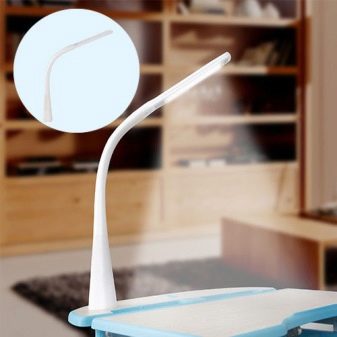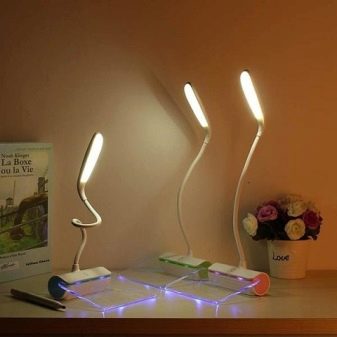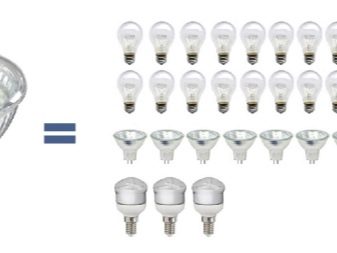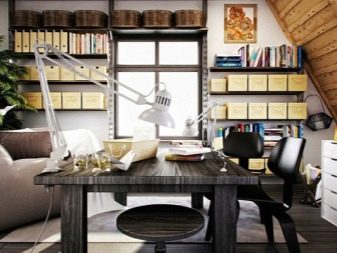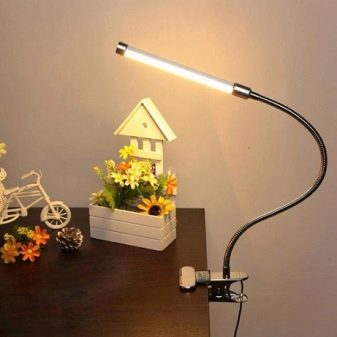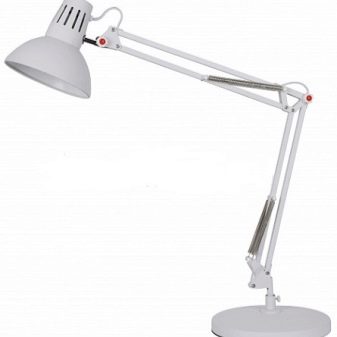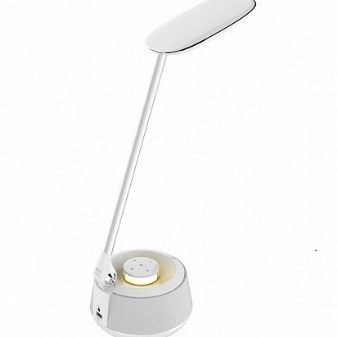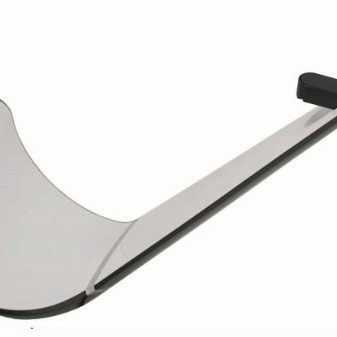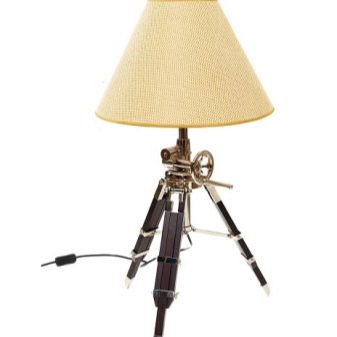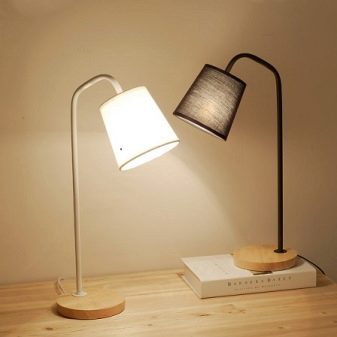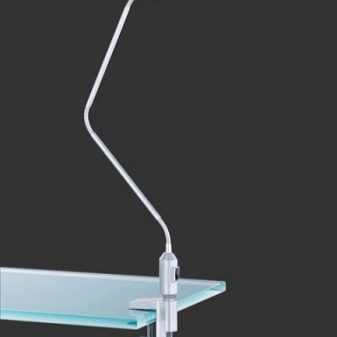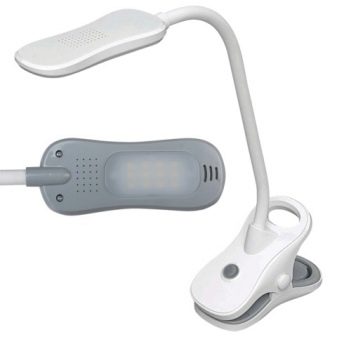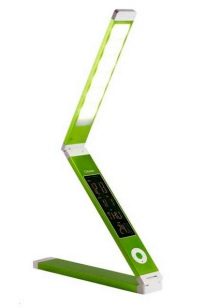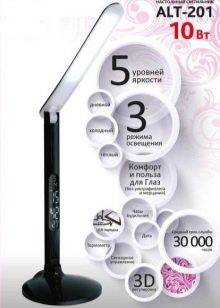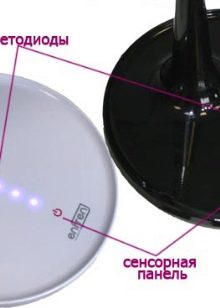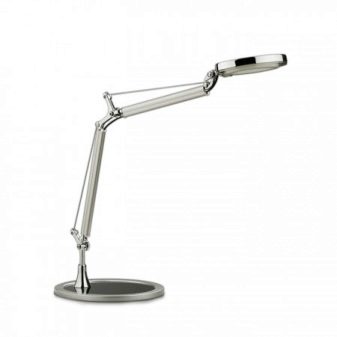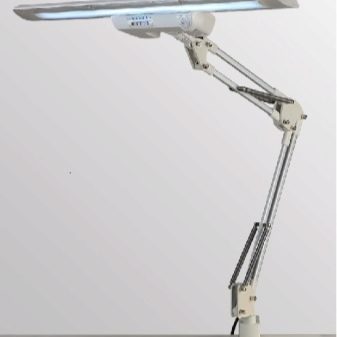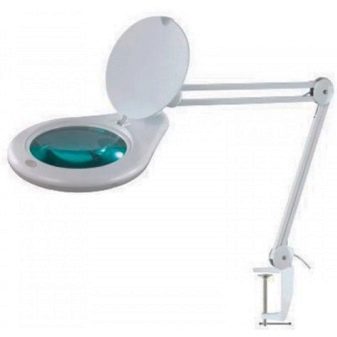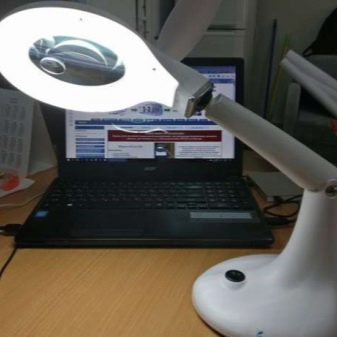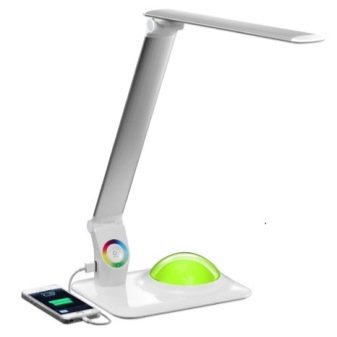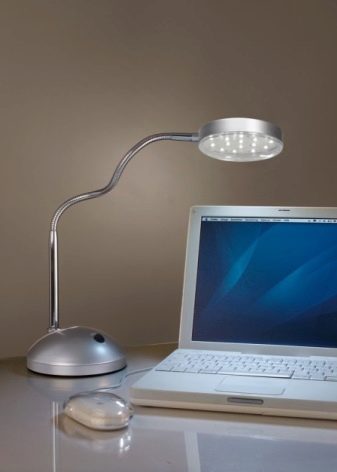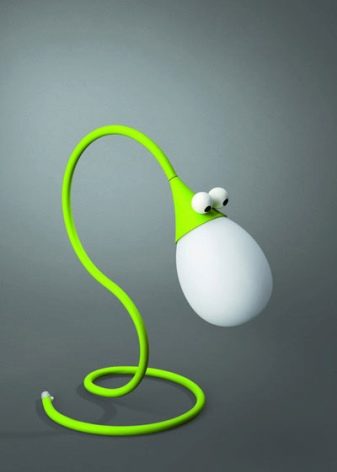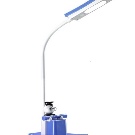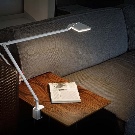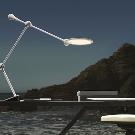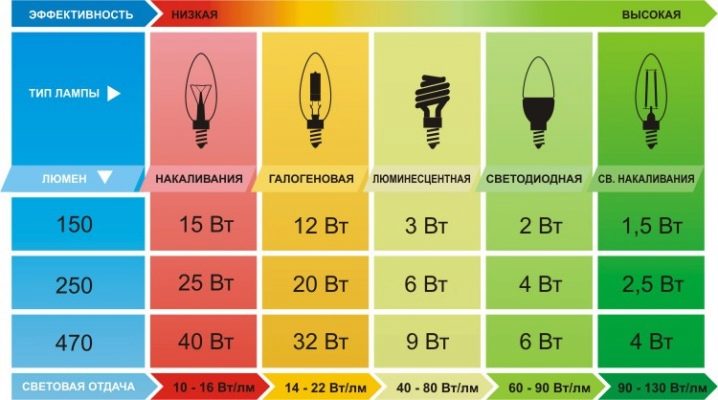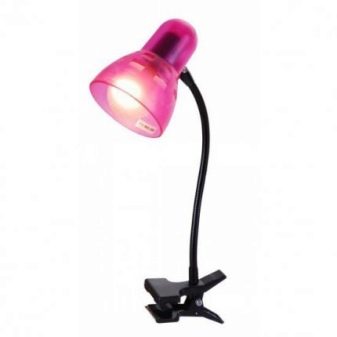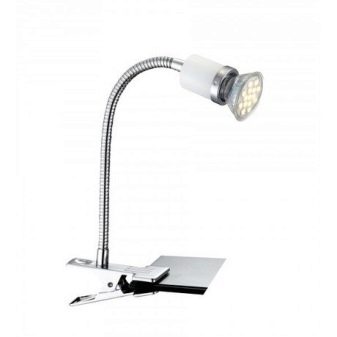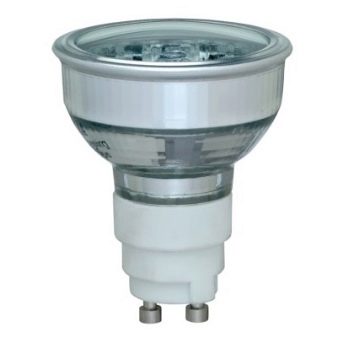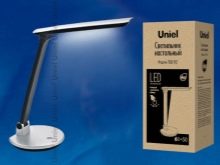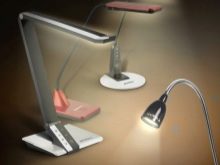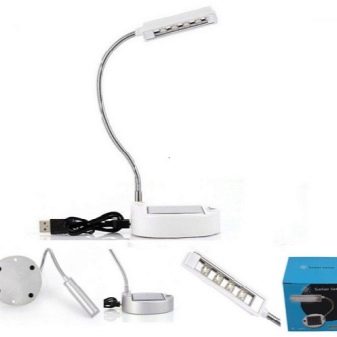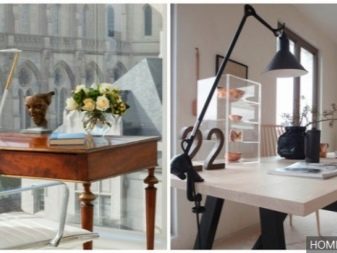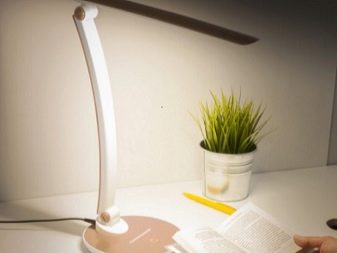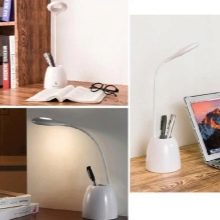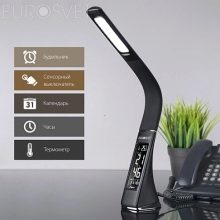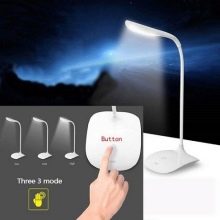LED table lamps

One of the most popular types of modern lighting devices is LED table lamps with directional light, due to their aesthetic appearance, low power consumption and long service life. LED lamps have good light and color rendering, which is important when illuminating work surfaces and can work in nightlight mode and desk lamp.
Consider the main types of LED lamps, their differences and key points of the choice of lighting solutions with LEDs.
Features, Pros and Cons
Interest in LED lighting is associated with its unique features that allow to save electricity, which has become especially important in the context of a gradual increase in the cost of energy. If we compare the efficiency and service life of traditional incandescent bulbs (LN), economical fluorescent devices and LEDs, the latter demonstrate results that many times exceed the capabilities of analogs.
The attractive consumer properties of LED lighting include:
- Low power consumption. The efficiency of LEDs is 10 times higher than that of ordinary LN.
- The formation of a uniform glow without a stroboscopic effect, irritating the eyes and the absence of UV radiation harmful to peripheral vision. In this regard, the LEDs are absolutely safe.
- Maximum possible light efficiency - devices with LEDs are leading in terms of luminous efficacy among existing light sources.
- Fire safety, because they exclude strong heat, which often leads to damage to the cartridges and contacts. Even with prolonged operation, the lamp remains barely warm.
- Continuity of work in conditions of mains voltage drops, which is reflected only in the intensity of the light flux.
- Duration of the functional resource. According to manufacturers, the duration of operation of LED lamps is on average 45 thousand hours.
In addition, LED-devices expand the possibilities of lighting design, especially when creating architectural light. It is the local decorative lighting that allows placing accents, emphasizing key details in the interior and visually marking the boundaries of functional areas.
The disadvantages include:
- High cost. Buying a high-quality LED lamp will cost 350-400 rubles.
- The need to use a special device to adjust the brightness of the lamp, since the usual dimmer is not suitable.
- A significant percentage of rejects on the market for LED products. Therefore, the claimed lamp life and real life may not be the same.
LED lighting is an effective way to save the family budget on electricity costs. Whether to use them is up to you. Our task is to help navigate the choice of lighting devices of this type, having considered their main characteristics and differences.
Models
The range of LED lamps is distinguished by a variety of designs, colors and designs, allowing you to choose the simplest model of the lamp for the nursery, as well as an exclusive option for the living room or bedroom.
Classification of desktop LED-devices:
- Interior models for decorating rooms in various modern styles - hi-tech, fusion, loft, minimalism.
- Products with advanced functionality, designed for full illumination of work surfaces.
- Devices with night light function for children. Eco-friendly plastic is used to make them and they are made in the form of animals, plants, fairy-tale characters and toys.
Table lamps are different constructive solution, and therefore there are several types of lamps.
LED devices with clamp
Such products are fixed to the working surface on the side, leaving the tabletop free. They are securely fastened to any horizontal surface by clamping. The flexible design of the column of lamp provides the ability to adjust the position of the lighting device. This category of products includes models with a clothespin - mini-lamps with a holder, equipped with a compact diffuser, their design no longer provides for a multi-stage knee.
With the help of models on the clamp, you can create not only local lighting, but also the overhead light, attaching them to the protruding parts of the furnishings. The redistribution of the luminous flux in the right direction is carried out by a mechanism on the holder.
Touch Control Models
Touch models are included in response to touching a certain area of the body. In devices with a dimmer, a special dimmer is provided to adjust the intensity of the luminous flux. Touch table lighting differs extremely simple principle of operation. The luminaire housing is equipped with a sensor that has a specially designed circuit that reacts to touch.
The sensor operates as a two-pole device (capacitor), the role of which is played by the body part of the lamp. Touching a person provokes an increase in the capacitance of the capacitor, which is fixed by the built-in sensor, which signals the adjustment mechanism responsible for switching on / off the lighting. In models with a dimmer, a motion sensor can be built in, which makes it possible to turn on the device when the user approaches the work surface.Interesting models with a clock and a thermometer, which are equally suitable for schoolchildren and office workers.
Transformers
These products are characterized by maximum functionality and convenience, due to the equipment with a flexible tripod that provides the ability to move away, zoom in, change the direction of the light flux. Models with adjustable height are indispensable for work that requires the utmost concentration of attention and accuracy, which increases the burden on vision.
Such lamps have a long leg, equipped with several swivel hinges and a weighted base for greater stability of the device. There are models of transformers with fastening to the table, where the base is equipped with a clamp.
Backlit Lamps
Particularly noteworthy LED lamp magnifier with backlight. The scope of application of luminaires with a lens is diverse - cosmetology (manicure, pedicure, tattoo, eyelash extensions), medicine, jewelry, embroidery and needlework, that is, those areas where the work involves the elaboration of small parts. A magnifying glass is installed in the rim of the lamp, providing a greater visibility with a uniform multiple magnification of objects without distorting them.
This category of devices is represented by desktop models on a clamp or stand and floor versions of lamps with a tripod, stand, wheels or a platform.
LED lamp-magnifiers differ in the parameters of increasing the lens from 3 to 12 diopters and the number of LEDs - 42-108 pieces, which affects the power of the light flux. The distribution of a large number of local light sources over the entire area of the lamp contributes to the creation of a “shadowless” effect, the essence of which is reduced to the formation of a common luminous flux from a multitude of local lights, which removes the shadow cast by the object on which the lighting fixture stands.
Multifunction models
Along with the usual lamps, working from the outlet 220-230 V, folding battery models are produced. The advantage of LED-devices on batteries - compact and the ability to use on the go. The price of road lighting options will be higher, but their practicality and convenience are worth it.
There are portable models with wireless charging and USB port. These are magic wands for those who have to work at night or just like to read in the evenings.Their main advantage is the ability to simultaneously charge two devices.
Main characteristics
The choice in favor of LED table lamps is most often made because of their functionality. Therefore, it is important to make sure that the model you like has the necessary characteristics in order to effectively perform the main task taking into account the specific operating conditions.
Power
Optimum power indicators for desktop light sources range from 60 watts to 100 watts. If you plan to illuminate a large work surface, then it is better to choose a 100-watt lamp. The power recommended by ophthalmologists is limited to 75 W, taking into account the ability of white paper to reflect light, increasing the brightness of the light flux.
When the rooms were illuminated only with incandescent lamps (LN), the brightness of the glow was evaluated, focusing on the power consumption of electricity. Therefore, for illumination of rooms of large footage - living rooms, halls or dining rooms used LN 100 watts. With the advent of LED devices that differ in light output, it was not entirely correct to be guided by this criterion.
Lamps with LEDs partially lose power due to the adapter, so there may be discrepancies between the power consumption and the brightness of the glow. The power of LED devices and the LN are compared using factor 8. Suppose that in order to obtain the illumination of a room that a standard LN of 60 watts provides, you need to use a LED analog of at least 7.5 watts. The 200 watt LN alternative is a 30 watt LED source.
Colour temperature
The operating temperature range for LED-devices may vary. Sources with a warm white light slightly yellowish hue - the perfect solution for apartments. Such lighting contributes to relaxation, making the rest as comfortable as possible. Neutral white lamps are best used to illuminate work surfaces.
Neutral color due to its features provides a clear view of all the details, eliminating a strong strain on vision. Luminaires with a cool white color of a bluish tint, similar to daylight, are suitable for offices and public institutions.
Light output
Choosing LED-products, it is important to consider the ratio of the parameters of the luminous flux of devices with LEDs and LN. Luminous flux is measured in lumens.Not every manufacturer bothers with the indication of this characteristic on the packaging of the lamp.
In such cases, the only guide for the consumer is power consumption. The presence of this parameter simplifies the selection of products. For apartments the power of LED devices up to 10 watts is enough. The indicator of a light stream of such LED of lighting is similar to power of LN of 60 Watts.
Base Type
In modern sources of LED lighting there are installed socles of all kinds. The most common types of cap with a screw connection - E-14 / E-27. Swivel caps GU-10 have two-pin connectors, therefore, are suitable for cartridges, where there is a corresponding spacing gap.
Ask the store what the lamp base in the selected product. It is recommended to choose LED lamps with the same base as the rest of the fixtures in the apartment. For example, when a standard lampholder with a threaded connection is provided in a floor lamp and a chandelier, a lamp that has an identical holder is selected.
Angle of light
If ordinary LN shine equally in all directions, then LED sources can spread the glow at a different angle of 15-180 °. For the newest models with a glass substrate, it is typical to have a luminescence angle of 360 °.Choosing a desktop LED-device on the angle of dispersion, proceed from its purpose. The narrow beam luminaires create accent lighting for furnishings, accessories, and functional areas of small size. Such lamps are suitable for illuminating work surfaces.
Power supply quality
It is worth knowing that high-quality power supplies are quite large. Some manufacturers tend to install small, low-power power supplies in the lamps: such savings affect the quality and duration of operation of LED products.
Color solutions
When choosing the color of the LED lamp for work, you should avoid screaming colors, preferring the calm shades of the neutral palette - white, black, gray, brown. These colors do not interfere with concentration and have a positive effect on vision. The lamp for the schoolchild is chosen according to the similar principle, it is better to refuse excessively colorful design, unusual prints and acid colors in favor of plain-colored plafonds of psychologically comfortable shades of green, blue, muted orange.
As for the coloristic decision of decorative lamps, in this matter they start from the general color palette of the interior and from what role it plays for fixtures. There are many options. They can act as accents, diluting the monochrome setting, maintain a colorful design and raise the color temperature in a “cool” monochrome interior.
How to choose?
In addition to the listed technical characteristics, when choosing a LED-device you need to take into account a few more points:
The geometry and material of the ceiling.
The ceiling light can be opaque, dark, transparent, colored, creating a soft, soothing light or, on the contrary, bright, focused. The use of colored translucent shades allows you to create lighting a certain shade. Ceilings, where the top is open, contribute to a visual increase in space, “lifting up” low ceilings. Writing work comfortably perform when the lamp has a ceiling with an open bottom.
The material of which the ceiling is made is also important. Lamps with a canopy of high-quality plastic - the best option for the nursery. The minus of metal shades is strong heating.Choosing a LED-device in your personal cabinet, it is best to give preference to products made of brass, glass, wood, porcelain, crystal or shades of high-quality textiles.
Ideal forms of lamps - cone-shaped, trapezoidal and spherical, which contribute to the formation of a comfortable luminous flux.
Functionality
The main criteria for choosing a table lamp for work is safety and maximum convenience. The presence of a movable tripod provides the ability to change the height of the lamp and the direction of the light flux. Due to the flexible holder, the product acquires greater mobility within the working surface. As an alternative, you can consider a model with a clothespin for rigid fixation of the device to the table, which serves as an insurance against accidental drops.
Power indicators
When selecting the power, the purpose of the lamp is taken into account. For an apartment optimally moderately saturated, not dim lighting. An excellent solution - LED lamps with adjustable brightness, which allows you to change the illumination, exposing a comfortable level of light for work or leisure.Touch models with the same dimmer will be suitable for the bedroom, living room and office.
Buying a powerful lamp-magnifier for the house is justified if you are seriously fond of needlework and embroidery, devoting a lot of time to your hobby.
Ideally, the color temperature of the table lamp should be like that of natural daylight, which has a beneficial effect on our well-being.
Placement tips
A competent choice of the form, design, color and power of the tabletop LED lamp is half the battle, it is equally important to place it correctly. Remember that only under the condition of high-quality, thoroughly thought-out lighting, the work will be productive, and the vision will be healthy.
So, what you need to know:
- Comfortable light on the working surface should be: soft - once and exclude contrasting borders - two.
- It is important that the glow spreads evenly across the entire working surface, which can be achieved with the help of the correct geometry of the ceiling, which scatters light over the largest possible area without harm to the eyes.
- The optimal location of the lamp - on the left side of the user. Allowed when the lamp is in front of a seated person.In both cases, the shadow will not interfere with the writing work.
- When placed on the working surface of the monitor, the light source is positioned in such a way as to exclude the direction of the light flux on the screen.
- It is better to cover the tabletop with a reflective surface so that the glare does not distract from work and does not irritate the eyes.
- Selecting a schoolchild's desk lamp, give preference to shades that cover the entire lighting element: this way you can avoid the eye-cutting effect of “cutting” light due to the direct light flux.
Review the LED table lamp with a dimmer, see the following video.


